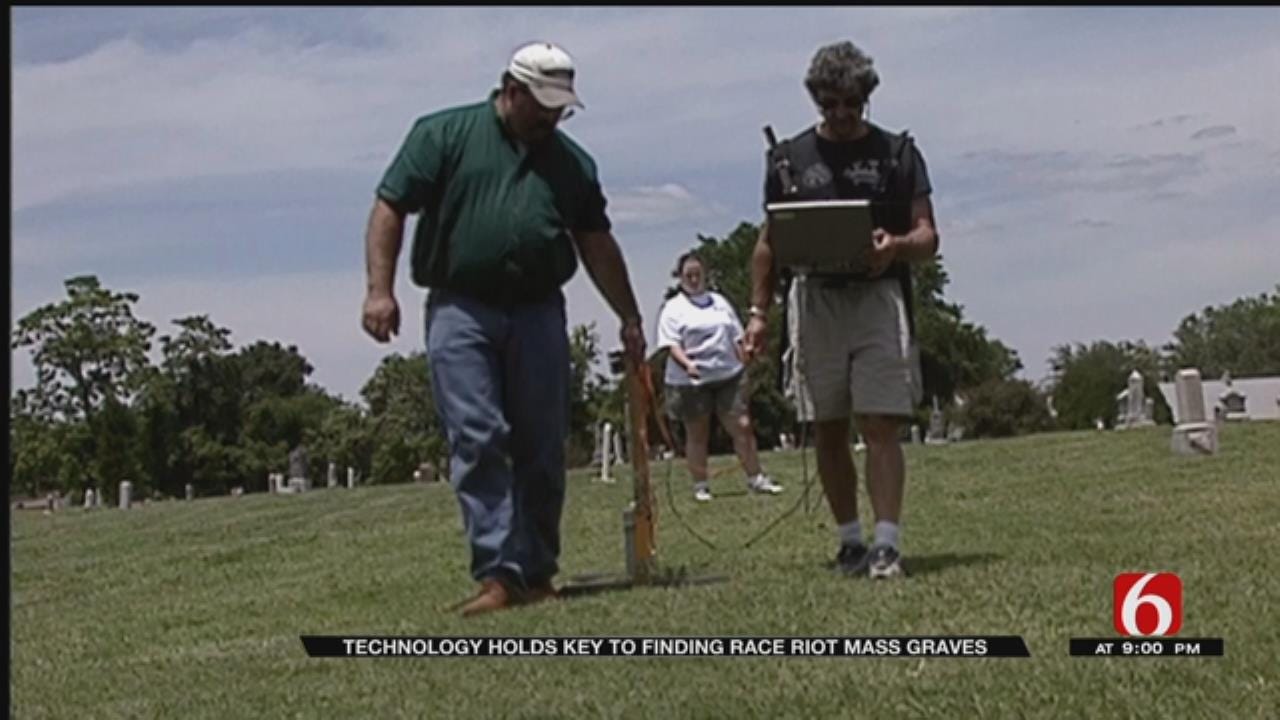New Technology Could Help Search For Possible 1921 Mass Graves
<p>New information has been released about the technology archeologists could use to search for possible mass graves from the 1921 Tulsa Race Riot/Massacre. </p>Friday, October 5th 2018, 10:26 pm
New information has been released about the technology archeologists could use to search for possible mass graves from the 1921 Tulsa Race Riot/Massacre.
"We would basically lay out a grid, a square and we will move the equipment back and forth in spaces about that far apart," said Dr. Scott Hammerstedt of the Oklahoma Archeological Survey. "The radar will shoot a pulse into the ground and then it will reflect back up and give us an idea of how deep it is."
The radar is one of several tools’ archaeologists could use to search three sites in Tulsa for possible mass graves.
"We look for contrast, so the mass grave is going to be an area that is going to be a decent size that will have different soil properties than the undisturbed soil around it,” said Dr. Hammerstedt. "So when we see it will basically just look like a big blob."
The searches will take place at Oaklawn Cemetery, Newblock Park, and the Booker T Washington Cemetery. Those three sites were specifically mentioned in a report published in 2001.
"That work was investigating stories about potential mass graves, looking at credibility issues, seeing if eyewitnesses could be located, they did all that and they really honed in on those three sites," said Historian Hannibal B. Johnson Esq.
The report was published by a commission created by the state to study the 1921 TULSA race riots.
"They found evidence of the possibility of mass graves at all three of the sites but the most likely site was Oaklawn Cemetery," said Johnson.
Almost two decades after the first search for the graves the technology has drastically improved so researchers hope that will mean new possibilities.
"You have much better computing power and much better resolution with the equipment, we can see a lot more than we could back then," said Dr. Hammerstedt.
"We have lingering, unanswered questions it impairs our ability to actually heal," said Johnson. "To the extent that we can answer unanswered questions connected to our history we are all better off."
The Mayor says it could take months before he's able to announce more details about the investigation. Researchers say they’re meeting with city leaders to discuss the mass graves next week.
More Like This
October 5th, 2018
September 29th, 2024
September 17th, 2024
Top Headlines
December 13th, 2024
December 13th, 2024
December 13th, 2024
December 13th, 2024










